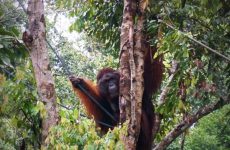If you have been doing your own shopping, you might think that you have already seen most of the fruits available in the country. Sure, we all know our bananas, oranges, apples, watermelon etc. However, what we see in our usual grocery stores and supermarkets are only a small part of what Mother Nature has to offer. Keep reading, you may be surprised to know that there are more exotic fruits to be discovered. Durian, rambutan, langsat and mangosteen may be among the few that are widely known from Borneo, but there are more!
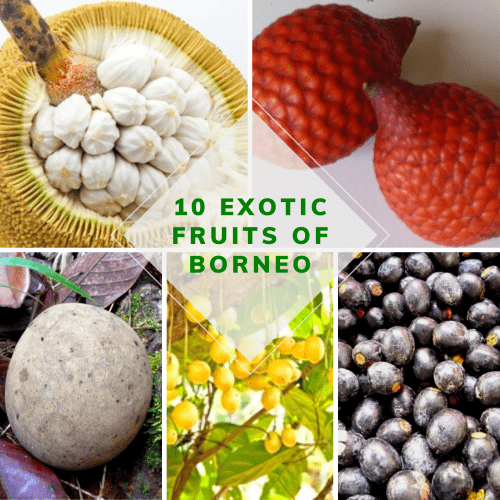
Here are 10 weird and exotic fruits from Borneo you’ve probably never heard of.
1. Snake Fruits
The Snake fruit grows in clusters at the base of the very short-stemmed palm tree. It got its name from its scaly skin.
There are two types of snake fruits, which are totally opposite in taste. They can look very similar. One has a sweet and tangy taste like pineapple (locally known as Salak – scientifically named as Salacca zalacca), while the other one having a very sour taste (locally known as Asam Paya – scientifically named as Zalacca conferta).
Asam Paya has a more lumpy texture and is more of a ruby-red colour while Salak is brownish-red in colour.
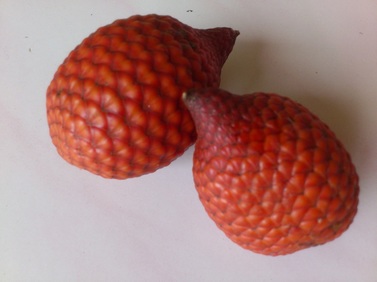
The salak can be used as eye medication due to its high content of beta-carotene. Salak can also help in diarrhea medication, diet program and good for our brain (as it is extremely rich in potassium and also pectin), for our stomach and skin.
2. Dabai
Dabai is considered local black olives of Sarawak. It looks like olive but tastes something like avocado. Scientifically, it is named Canarium odontophyllum. The Dabai grows abudantly along riverbanks in Sibu, Kapit and Sarikei divisions of Sarawak. It is a seasonal and highly perishable fruit with a shelf life of only 2-3 days, therefore one should enjoy them the soonest possible. Fried rice using the Dabai fruit is one the must try dishes when one visits Sarawak.
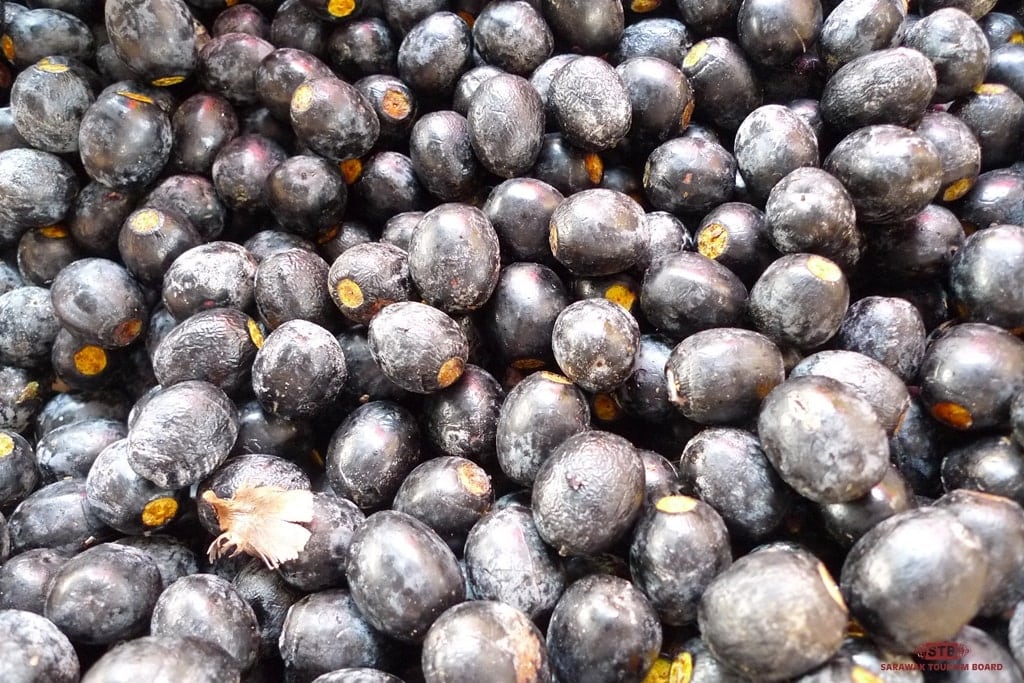
3. Mata Kucing
According to International Society for Horticultural Science, locally known mata kucing is actually a close relative of the longan (hence the similar smell and taste). There are three varieties of “warty” skins mata kucing fruit and another variety of smooth one.
There are many stories regarding the origin of the fruit’s name. One promising theory is that when you peel off the skin and expose the dark seed under the flesh, it looks like a cat’s eye. Mata kucing is literally cat’s eye in Bahasa Malaysia.
In fact, one of the explanations for how the city of Kuching got its name is because the riverbank along Kuching Waterfront used to have these mata kucing trees.
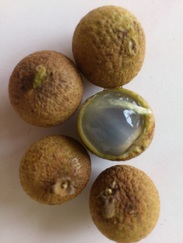
4. Pulasan
Closely linked and sometimes mistaken for the rambutan, pulasan is part of the Sapindaceae family. It is a white fruit is extremely sweet with a big woody seed in the middle. The actual fleshy part surrounding the seed is thinner and less sweet than the rambutan’s, and it often adheres tightly to the seed kernel. As a result, some may find it harder to enjoy compared to the rambutan. Nonetheless, both of them taste generally sweet and tasty.
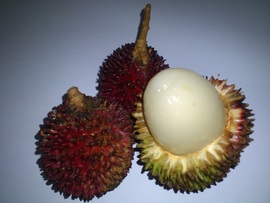
The “Pulasan” has a number of health benefits. It reduces body fat, so it is good for losing weight and maintaining a healthy body. Its high Vitamin C content gives a great boost to the immune system. It can quicken the healing of wounds, also repairing and maintaining bones and teeth. Traditionally, the leaves and roots of the Pulasan tree are mashed and applied on the skin to treat various ailments.
5. Crystal fruit
Indonesians named it matoa, meaning ‘crystal’. It is a member of the sapindaceae family. Some locals call it “crystal longan” or “crystal lychee” or “dragon eyes”. Flavor wise, it has a mixture taste of lychee and rambutan fruits.
It is about the size of quail eggs with a length of 1.5 – 5 cm. It has smooth skin blackish brown color when ripe. The crystal fruit tree can grow to great heights of 10-20 meters with its fruits perched high atop the tree.
Interestingly, hair shampoo can be made from its bark.
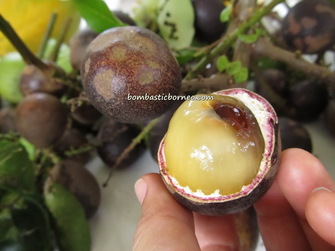
6. Tarap
Tarap is botanically it is known as Artocarpus Odoratissimus. It belongs to the Moraceae plant family like its related cousins; jackfruit, chempedak and breadfruit. Now, tarap has many improved varieties because of its wide cultivation in Borneo. Experts believe that tarap is native to Borneo even though it also grows in the Philippines. There, it is called Marang.
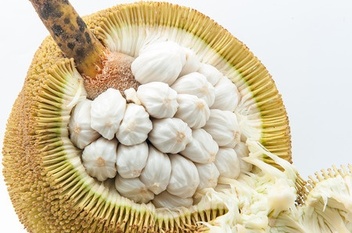
Kadazan/Dusun tribe of Sabah know it by the name timadang. The fruit itself is soft and creamy. It tastes like the sweetest custard apple or sour-sop, but it is smooth, not grainy. And just a bare hint of tartness. It is easy to separate the small seed with your teeth.
7. Rambai
The Rambai might look somewhat like langsat, but it belongs to a different family, Euphorbiaceae. It is scientifically named Baccaurea motleyana. Rambai typically hangs in long stalks from the branches in bunches. It has a sourly sweet flesh with seed in the middle.
Interestingly, the fruit tree has become valuable because it provides shade.
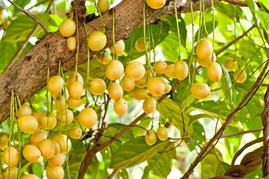
8. Kapul
Kapul, as the Kalimatan locals called it, looks like a mangosteen. It has a tree bark-like skin. There are two different flesh color for Kapul; yellowish and white. The locals in Sarawak named those two differently – entongon or bitongon for the white flesh and tampoi for the yellow flesh.
Its tree is dioecious, meaning it has either only male or only female flowers). However, only the female trees bear fruit directly on their trunk and large branches.
9. Wild Starfruits
The scientific name of the wild starfruit is Baccaurea Angulata. Meanwhile, locals call it as Belimbing Merah. It was part of the jungle produce not long ago. However, farmers now grow it to meet the market demand for indigenous fruits.
Belimbing Merah derived its name from the color and shape of the fruit. This red starfruit is also called “red raspberry”. The whitish content of the fruit is the same color and taste as the rambai fruit.
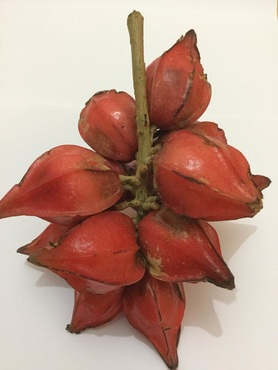
It is a member of the euphorbiaceaen family which the rambai and tampoi fruits are also members. Its tree can tower up to 8 to 10 m. A young fruit is purplish in color, much like a grape. When the fruit is ripe, it changes color to bright red.
10. Wild Jungle Mango
The wild jungle mango fruit has the size of a coconut or a canon ball. The Ibans of Sarawak named the fruit mawang, while the Bidayuhs called the fruit assem bawang. At the same time, Sabahans call it embawang, while the local Malays know it as asam embang or bambangan.
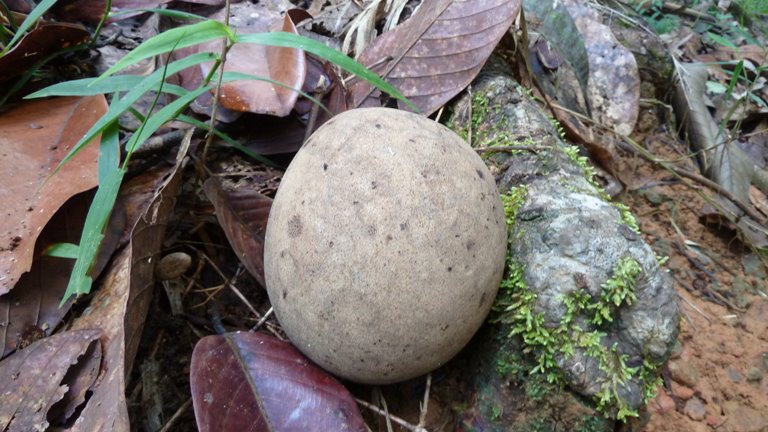
It is a member of the anacardeaceae family. Its botanical name is Mangifera Pajang Kostermans. It is the biggest fruit in the genus mangifera. Interestingly, the fruit juice contains high amount of nutraceuticals and can reduce the risk of cardiovascular disease.
Source:
list25.com/25-weird-and-exotic-fruits-from-asia-youve-probably-never-heard-of
www.healthbenefitstimes.com/health-benefits-of-salak-fruit
bombasticborneo.com/2012/01/dabai-fruit/
sarawaktourism.com/blog/what-is-buah-dabai/
www.houseofannie.com/cat’s-eye-fruit-mata-kuching
www.fruitipedia.com/pulasan.htm
healthybenefits.info/the-health-benefits-of-pulasan-fruit
allthingsborneo.blogspot.my/2008/10/tarap-unique-bornean-fruit.html
gardenemerald.blogspot.my/2011/10/wild-star-fruit.html
wildadventure-centralborneoisland.blogspot.my/2013/02/25-rare-fruit-of-borneo.html
www.fruitipedia.com/Rambai_baccaurea_motleyana.htm
bombasticborneo.com/2013/01/crystal-fruit
tropical.theferns.info/viewtropical.php?id=Pometia+pinnata
indonesian-fruit.blogspot.my/2011/12/description-of-fruit-matoa-pometia.html
www.youtube.com/watch?v=pI8v-z5ypTU
www.youtube.com/watch?v=_qa_rPi6Yd8
matahariborneo.blogspot.my/2014/01/this-is-how-you-cut-mawang-fruit.html
www.youtube.com/watch?v=p0_MTU5dfwY

